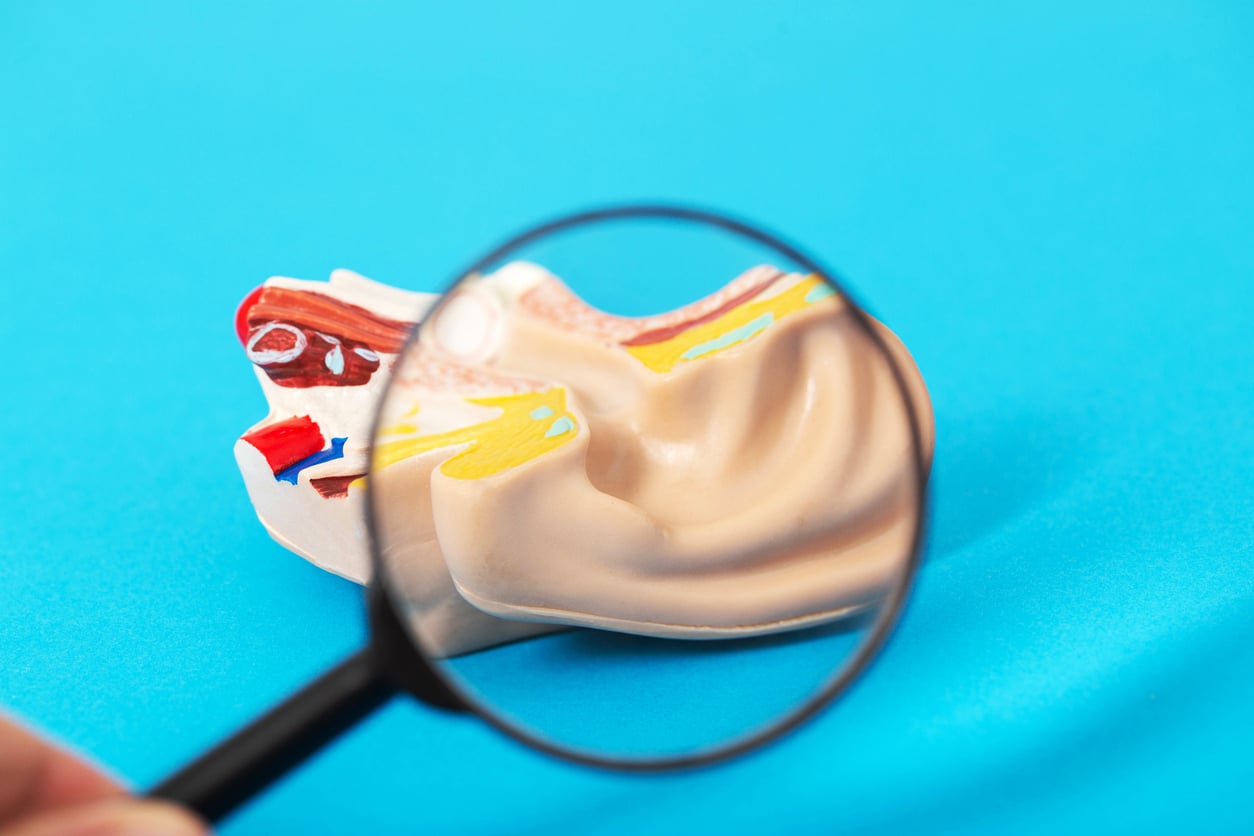There are several factors that can interfere with your hearing, from exposure to loud noise and aging to ear infections and earwax blockages. One culprit you might not have considered is the bone remodeling in your ear—a condition called otosclerosis.
How Does Bone Remodeling Interrupt Hearing?

The bones in your ear are constantly remodeling. While they usually do so without incident, there are cases where the new bone grows abnormally. If the new bone growth stops sound from traveling through the middle or inner ear, hearing loss results.
Otosclerosis affects over three million Americans, making it the most common cause of middle ear mechanical hearing loss in young adults.
How Do You Diagnose Otosclerosis?
Your ENT specialist will diagnose otosclerosis with one or more of the following:
- A symptom review
- A pure tone hearing test to measure decibel loss
- A tympanogram to measure how well the eardrum works
- A CT scan to see the bones and tissues in your ear
Can You Prevent Otosclerosis?
There are no specific risk factors, like diet or noise exposure, that increase your likelihood of developing hearing loss. Some people are more genetically predisposed to the condition, but there isn’t a way to prevent it.
Can You Treat Otosclerosis?
There are three options to treat or manage otosclerosis and the resulting hearing loss:
- Stapedectomy. During a stapedectomy, your ENT specialist will place a prosthesis in your middle ear, bypassing the affected stapes bone and allowing sound waves to move through the inner ear. Your hearing should improve after a stapedectomy. Whether or not you qualify for a stapedectomy depends on the location and severity of otosclerosis and if your ENT decides your body can tolerate the procedure.
- Cochlear implant. Cochlear implants bypass the inner ear structures to make a new path for sound to get to your brain. Each implant consists of two parts: an external part that contains a microphone, processor and transmitter, and an internal part that features electrodes and a receiver. The two devices work together to bring sound to your brain.
- Hearing aids. Hearing aids collect and amplify sound to manage hearing loss. While they can’t prevent otosclerosis from developing or getting worse, they can help you manage its effects.
If voices sound muffled or you notice the birdsong in Fossil Creek Park doesn’t shine like it used to, contact Alpine Ear Nose & Throat PC for a consultation with one of our specialists.